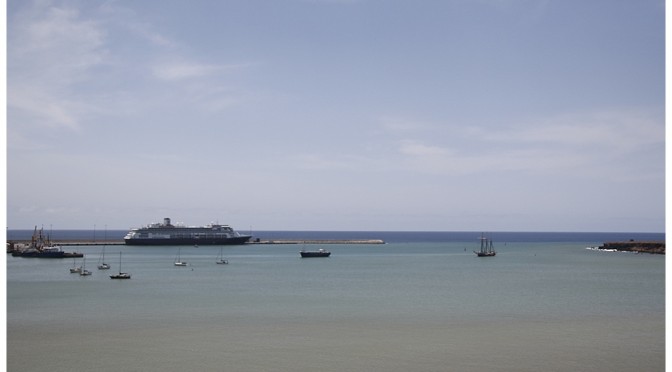They say that not many cruise ships call at Praia; having arrived off the harbour exactly on time, we then had the frustrating experience of not being able to contact their port control, either they were still sleeping, or they hadn’t turned up for work. It was 40 minutes later that the pilot boat appeared, crossing the harbour and coming out to us. Frustrating because I could have saved fuel, had I known they were on ‘Africa’ time, i.e. they would “do it when they feel like it”.
While waiting ½ a mile off the breakwater, I decided that to save time, I would turn 180° and back in through the entrance, this would save us swinging inside the harbour. This of course confused the pilot, who (probably) always ask for a port-side ladder, which would be the sheltered side, if one was going in bow-first; we of course, were not and had the starboard ladder for him, he obviously wasn’t looking out of the window when he made his request. 
Having boarded him (and therefore having ‘official’ permission to enter), using the Joystick, I ‘bent’ her around the end of the breakwater and brought her alongside, that 180° turn had paid dividends. A shuttle-bus service was laid on for guests wishing to go into town and buses were waiting for our tour guests. Karen and I, having wandered the town, negotiated with a driver to take us to some ‘sites’ we had read of.
The island, like all others in the Cape Verde group, are of volcanic origin and have towering peaks and high cliffs on the coast. Their climate is arid, almost like a desert, interspersed with greener patches. The island was discovered around 1460 by the Portuguese, who then built a garrison in Cidade Velha. It is now a UNESCO World Heritage site. Transcontinental slavery made Cidade Velha the second richest city in the Portuguese realm. It was later attacked by pirates and the occupants moved to the plateau, on which Praia now lies.
In Cidade Velha a 14th-century church, in which services were held and attended by Vasco de Garma and Christopher Columbus. Near the church lies the Rua Banana, the oldest surviving 14th-century street urbanised by Europeans in sub-Sahara Africa. The original white marble pillory post in the square still stands; a sad reminder to the days of slavery and the whipping of disobedient slaves.
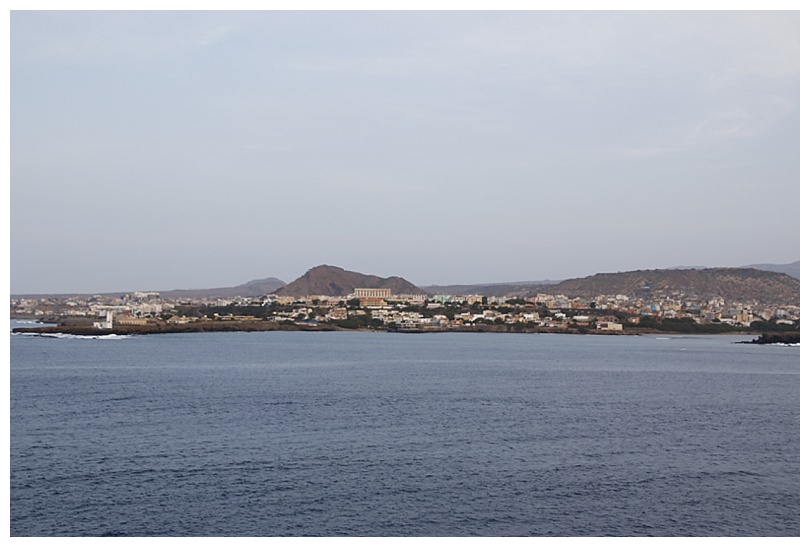
The approach to the port
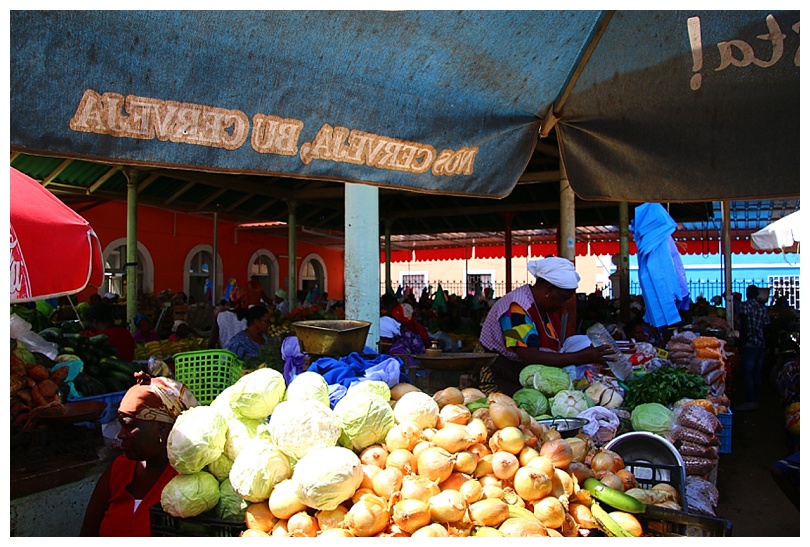
The ‘African’ vegetable market
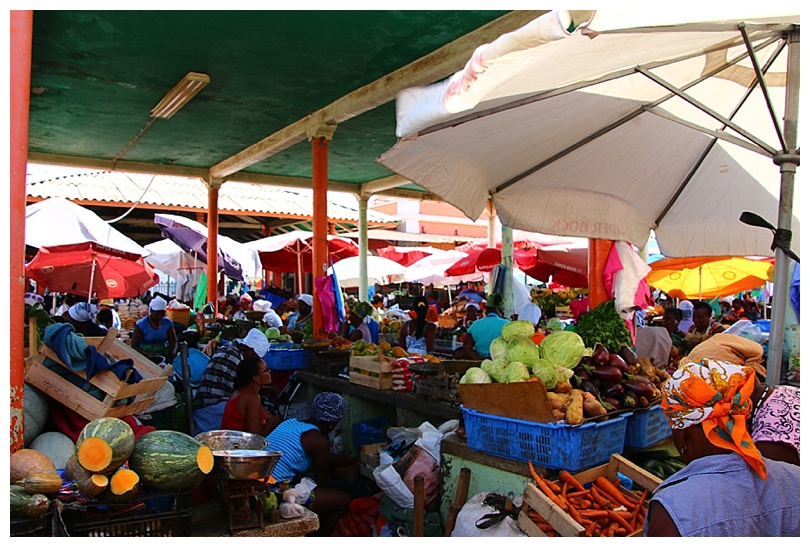
Too colourful not to photograph, the market again
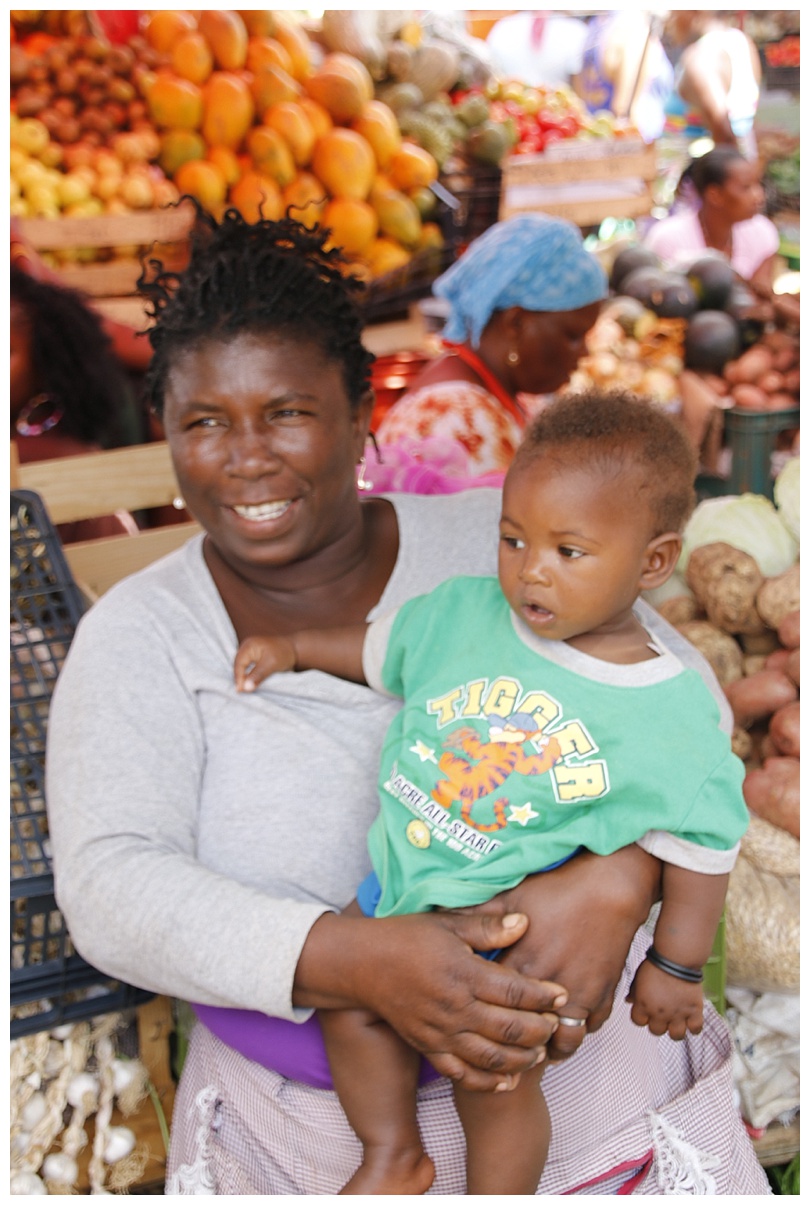
Stall-holder with her child
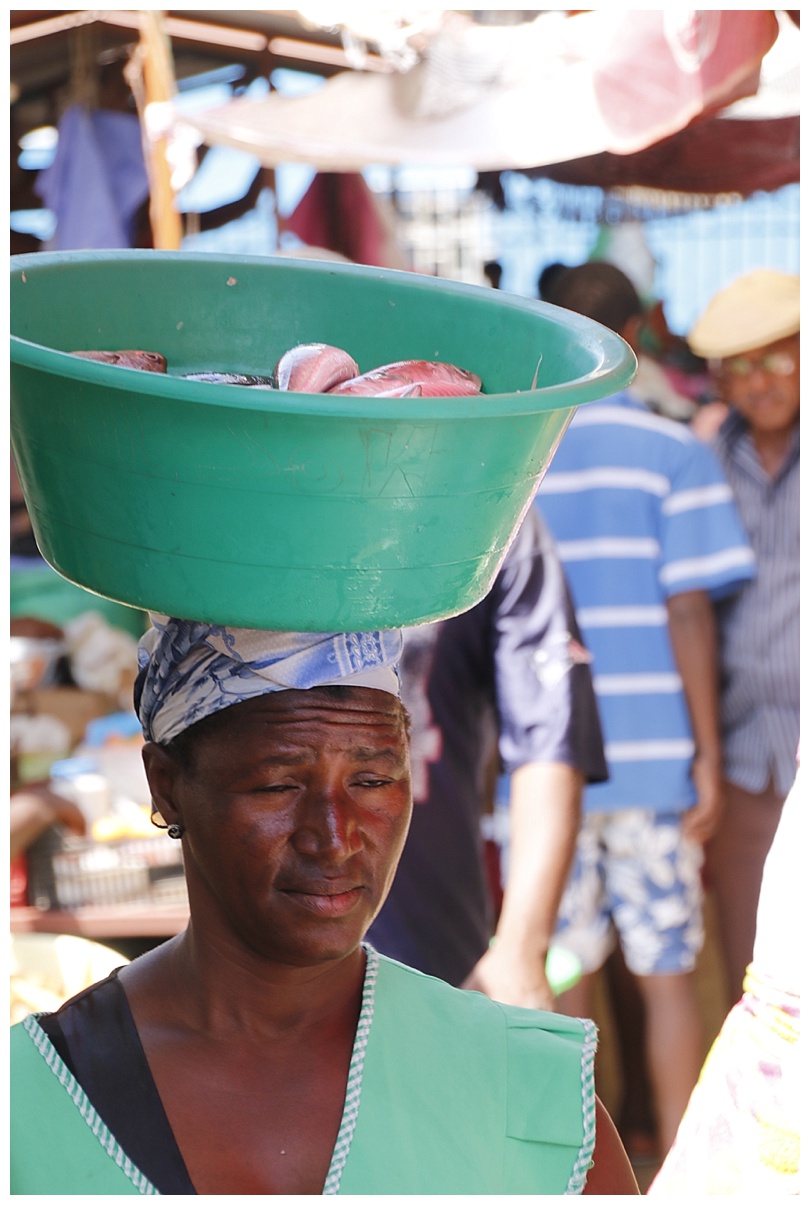
Everyone carried their goods like this.
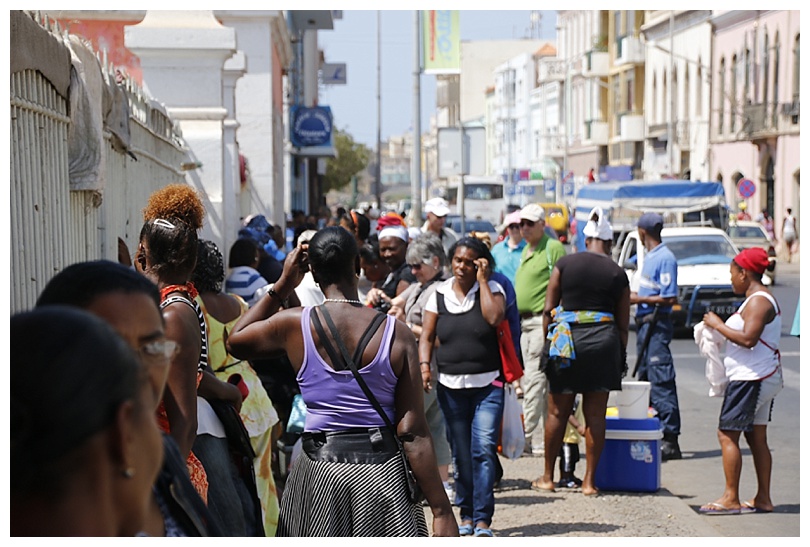
The busy street outside the market.
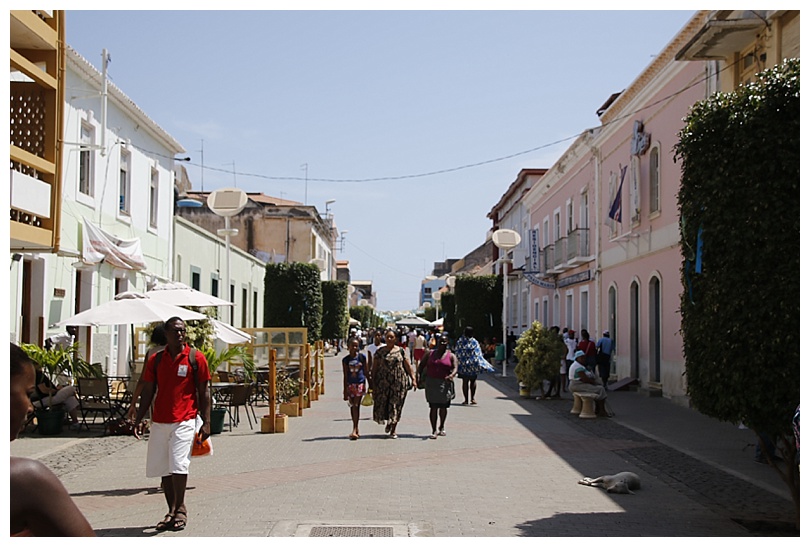
Oneof the ‘colonial’ streets
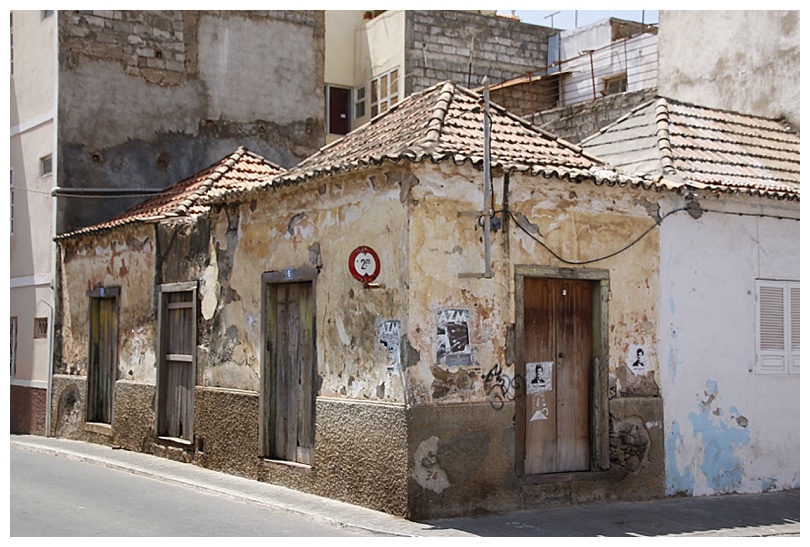
Old and new.
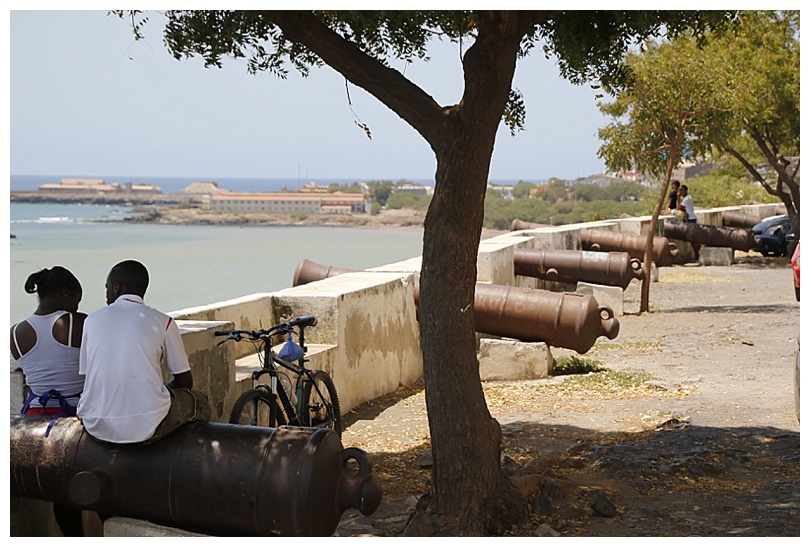
A battery of cannon, overlooking the harbour.
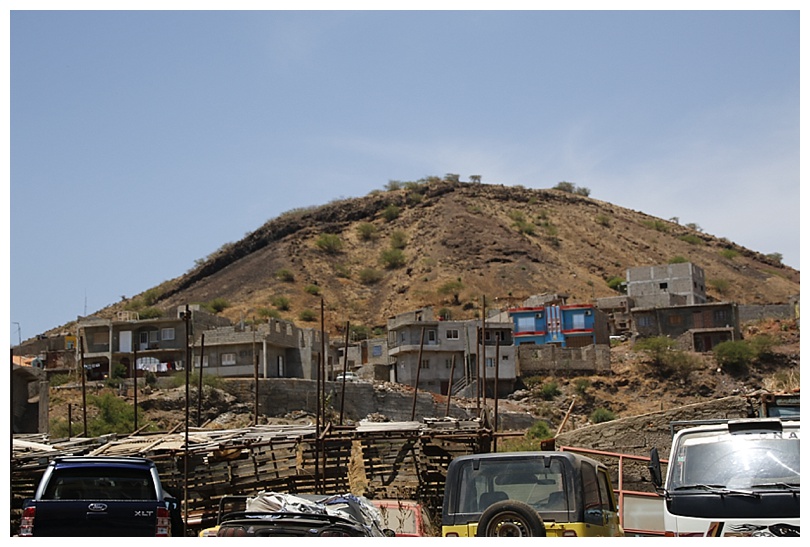
Some less salubrious dwellings.
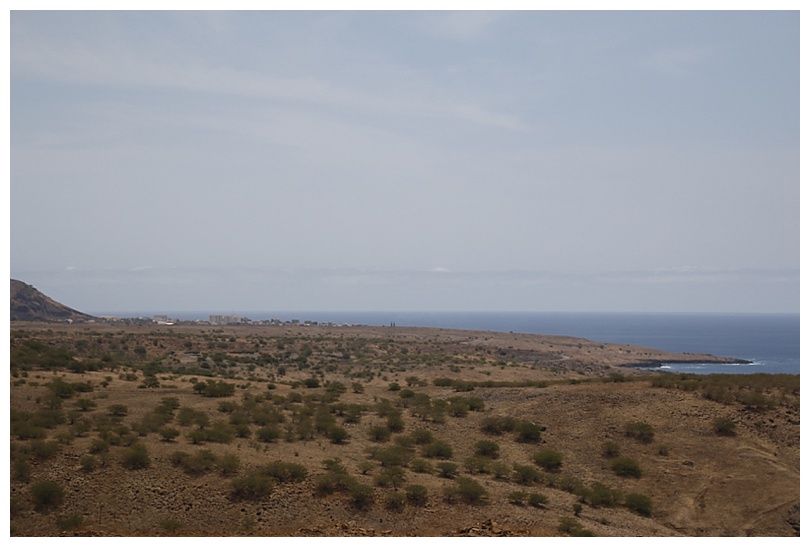
The arid landscape
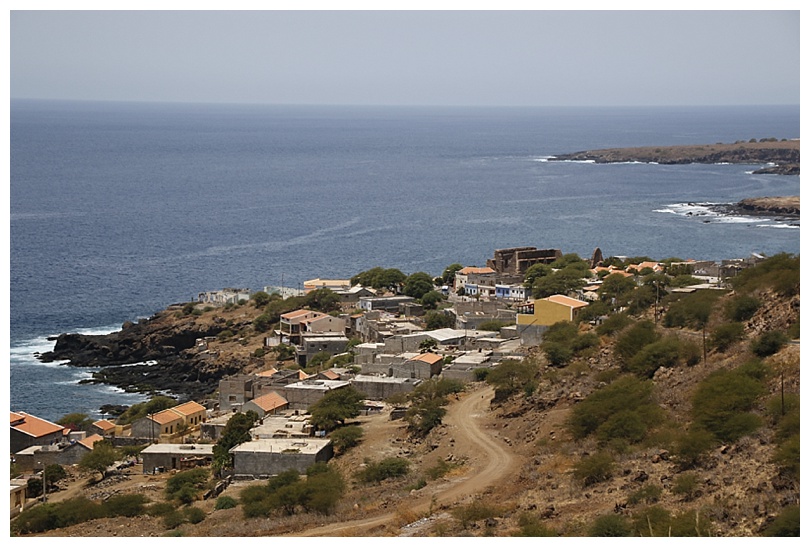
New holiday ‘cottages’
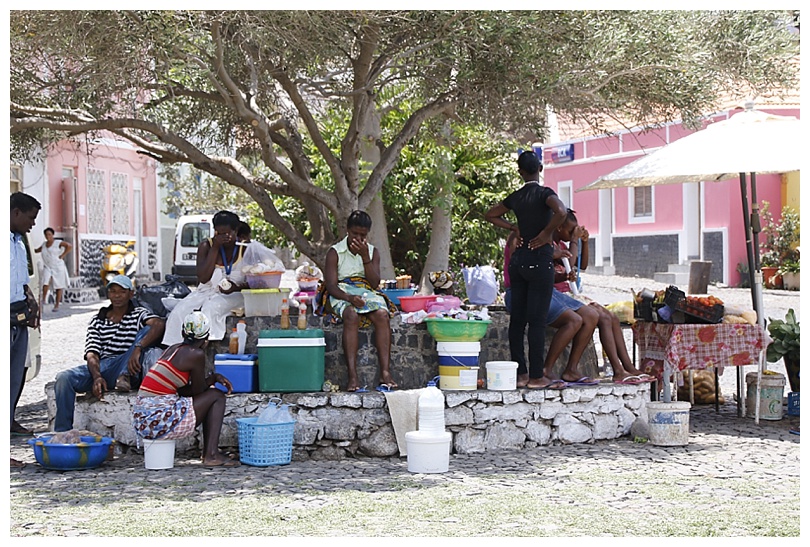
In the shade and selling groceries.
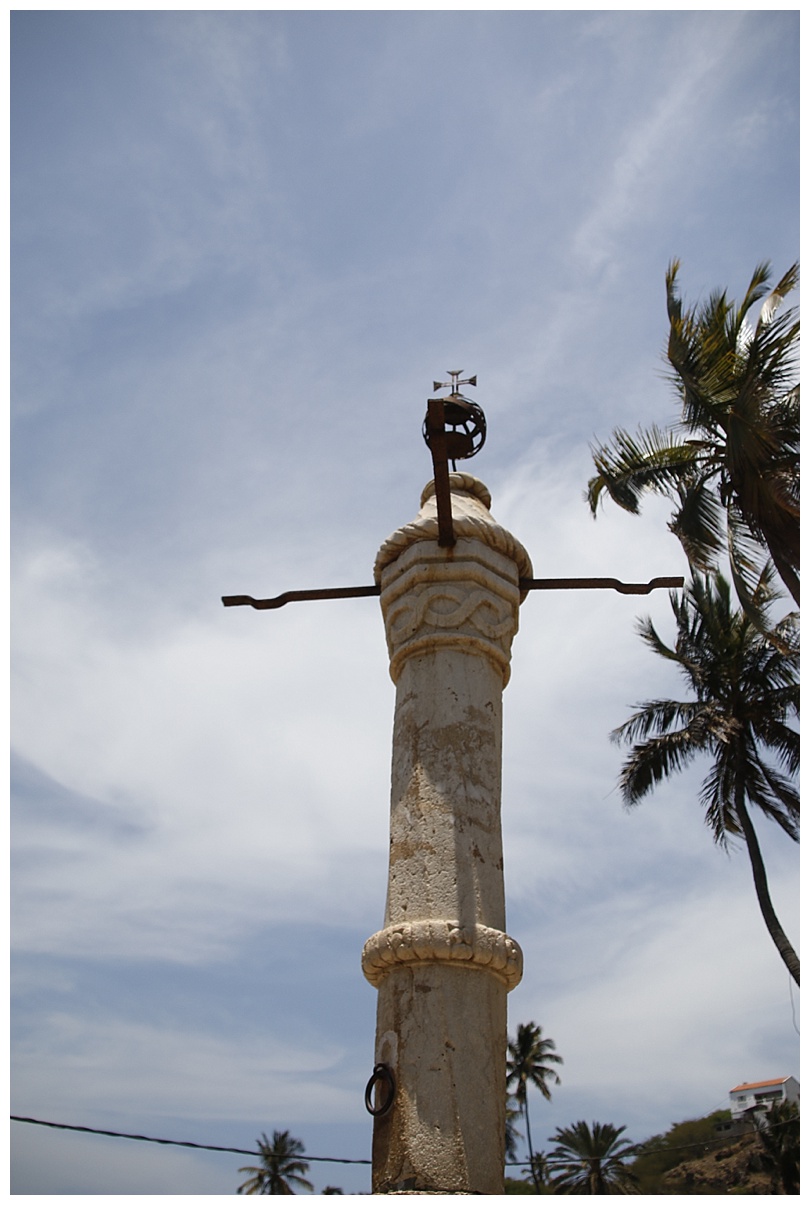
The pillory post
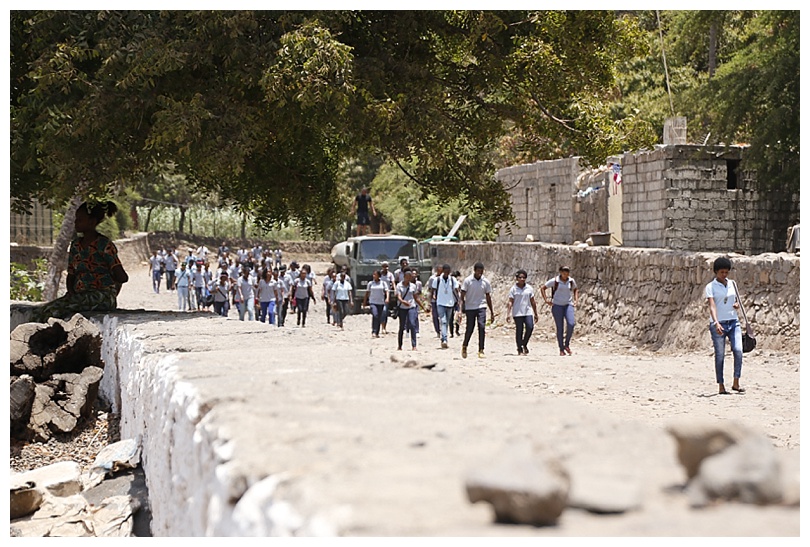
Schoolchildren on their way home
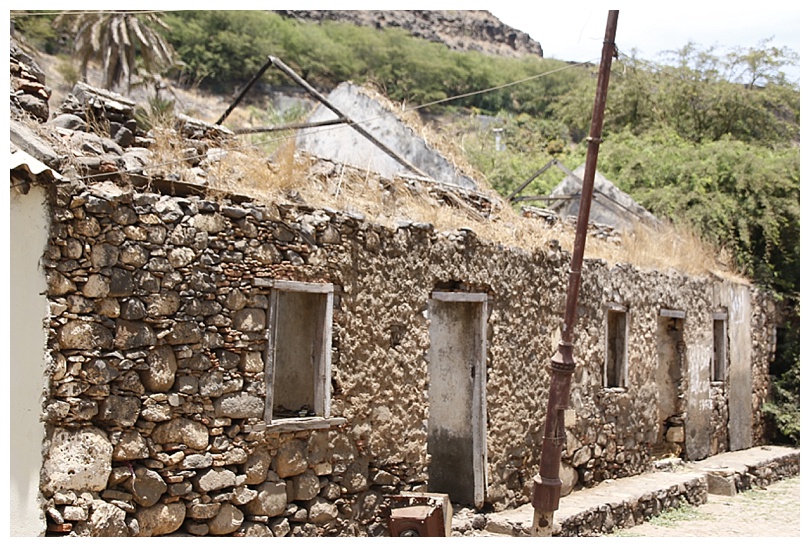
Rua Banana
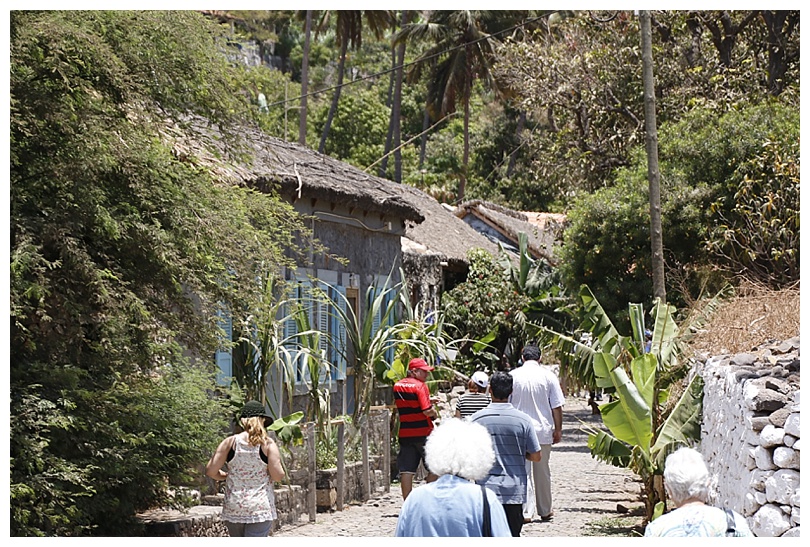
More Rua Banana, (the roofs are banana leaves)
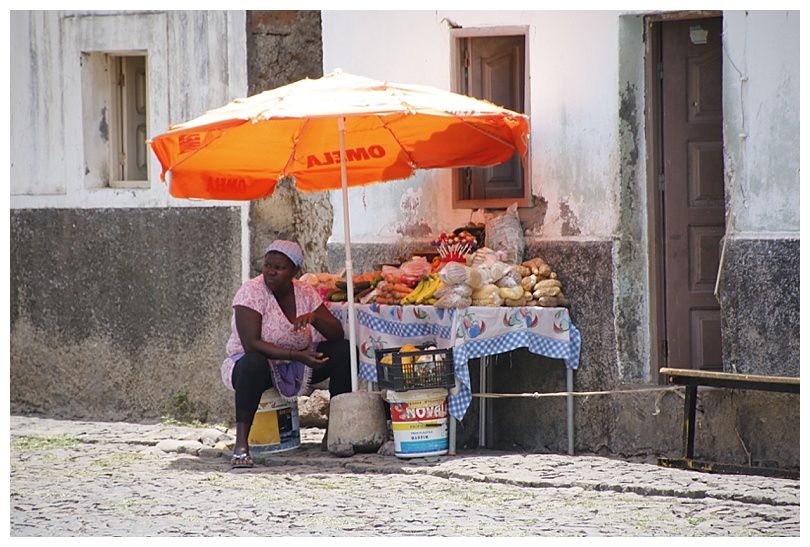
More shade…………
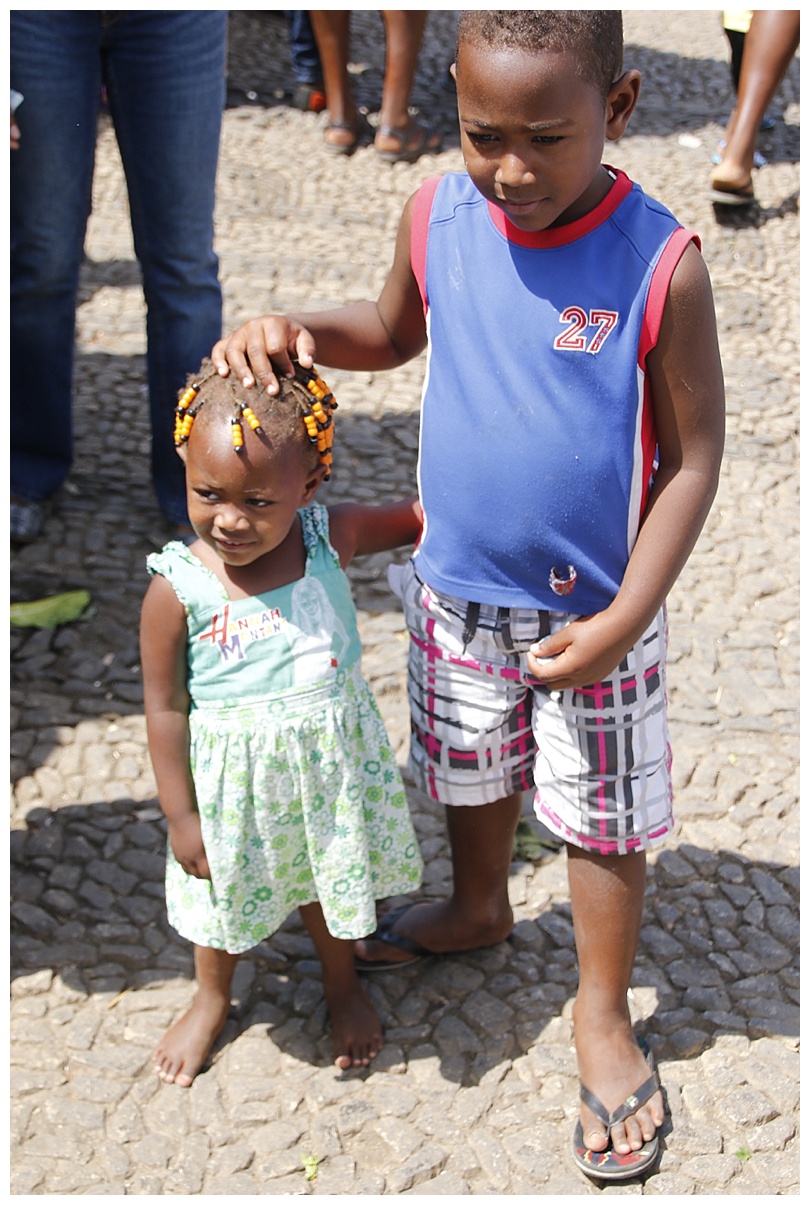
Looking after his little sister
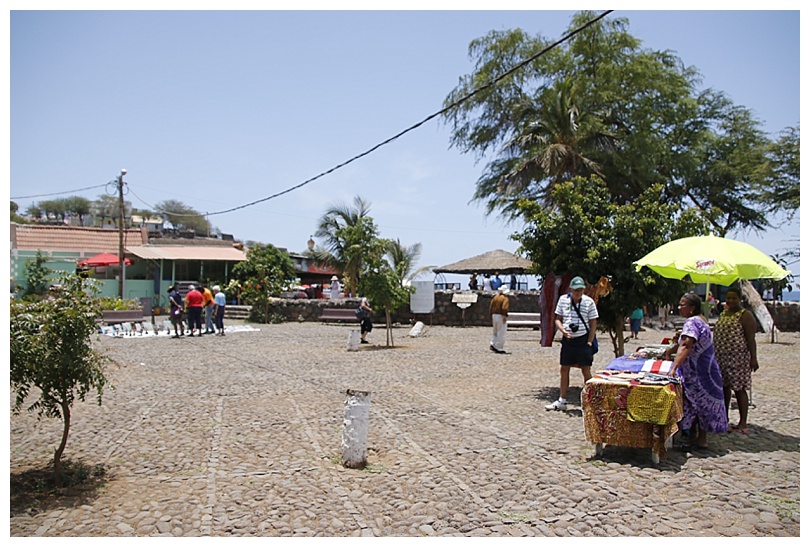
Pelourinho square, (the pillory post is just off to the left)
